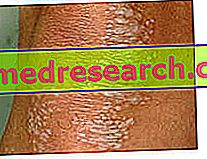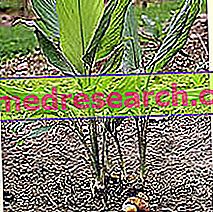Definition
Lichen sclerosus, popularly known as sclerotrophic lichen, identifies an inflammatory morbid process of chronic sclerotic nature, which involves skin and mucous membranes. Unfortunately, it is not uncommon for lichen sclerosus to be misdiagnosed, minimized or, even worse, underestimated: it is in fact a phlogosis with a potentially pre-carcinogenic immunological character. The sclerotrophic lichen can ideally affect every district of the body, although it frequently appears (in 83% of cases) at the level of male and female genital tissues.

Incidence
Lichen sclerosus, a variant of lichen planus, is a widespread disease among the global population (estimated incidence rate 3-15%), despite little discussed; some scientific texts believe that the disease is primarily female, but from recent statistical analyzes, it seems that lichen sclerosus affects both men and women equally.
Man is more subject to lichen sclerosus with advancing age; compared to girls, women of pre-menopausal age seem to be more sensitive to ano-genital lichen sclerosus.
The disease can also occur among infants, particularly among females: when comparing the adult lichen sclerosus with the infantile one, the chances of complete recovery, without chronic complications, increase considerably in children. Furthermore, it was found that during puberty lichen sclerosus is even more easily treatable: in this regard, a possible "protective" function of sex hormones has been hypothesized.
The lichen sclerosus is recorded above all among the uncircumcised males: it is estimated that the inflammation is diagnosed in 3, 6-19% of the removed foreskins [taken from clinical Andrology, by Wolf-Bernhard Schill, Frank H. Comhaire, Timothy B. Hargreave ].
Lichen sclerosus in women
Although it may also involve extra genital sites (arms, legs, trunk, tongue and oral mucosa), the lichen sclerosus most frequently affects the female genitals (scleroatrophic ano-vulvar lichen): it is an inflammatory form that generally causes itching, burning and dispareunia, and could degenerate to the point of melting the small and large lips of the woman. It would be advisable to undergo periodic controls to monitor the disease, especially when the woman complains of lacerations or hyperkeratotic (thickened) areas on the genital level; the sclerotrophic lichen causes a consistent and annoying dryness at the level of the vaginal and perianal mucosa, accompanied by local irritation, white spots, fissures and shrinking or destruction of the labia minora.
As we have analyzed, lichen sclerosus could be indicative of a pre-neoplastic form such as, for example, vulvar epidermoid carcinoma: for this reason, prophylaxis and periodic disease control visits are indispensable.
Lichen sclerosus in humans
The older a man gets, the more he runs the risk of contracting lichen sclerosus; however, the male form of the disease is known as lichen sclerosus balano prepuziale. The genitals have evident white-brownish glossy patches, associated with excoriation, microlesions, itching, penodynia (male variant of female vulvodynia), pain and possible burning sensation during intercourse (dyspareunia). Furthermore, the disease could cause urethritis, urethral stricture, tight phimosis and difficulty sliding the preputial leaflet on the barnacle (glans). The term lichen sclerosus, as the term itself suggests, could degenerate and cause a slow but progressive sclerotic scarring of the foreskin, glans, urethra.
Often, unfortunately, lichen sclerosus is misdiagnosed, therefore therapy is also not suitable: in fact, it is not uncommon for the affected male patient to try to treat the disorder with inappropriate drugs for supposed fungal infections.
Self-diagnosis is certainly not the best option, although it may apparently be the simplest: for men, in particular, genital disorders are decidedly embarrassing problems, so the visit to the andrologist is often considered too late. Lichen sclerosus is a potentially dangerous disease, which sometimes conceals balanites, postmen or balanoposthites, sometimes unknown infections, or even severe precancerous forms: in this regard, it is important to seek medical attention from the earliest symptoms.
Degeneration of lichen sclerosus in humans: Involvement of the foreskin → glans involvement → urethritis → urethral stenosis → squamous carcinoma of the penis |
Lichen sclerosus in the child
Generally, the lichen sclerosus that affects infants only rarely does not present a good prognosis: in fact, most of the time, the child complains of itching or burning at the vulvar, perianal level, while the affected child has a generalized genital irritation very similar to effects determined by balanoposthitis, sometimes related to phimosis (narrowing of the preputial leaflet).
Related diseases
Although the triggering causes responsible for the manifestation of lichen sclerosus, have not yet been identified, some associated and potential (but not fully demonstrated) risk factors have been observed: dyslipidemia, chronic infections in general, vitiligo, pernicious anemia, lupus erythematosus, diabetes mellitus, spino cell carcinoma of the penis. Psychophysical stress also seems to play a fundamental role in the onset of the disease
[taken from www.latuapelle.org].
Therapy
Medical treatment is absolutely essential to redeem the patient from lichen sclerosus: it should be pointed out that, in general, the multidisciplinary approach is necessary, so the patient should undergo several clinical trials to get a complete picture of the disease. We recommend the dermatologist, gynecologist / urologist, and other specialists, depending on the severity of the disease.
The most recommended therapies are based on the administration of pharmaceutical specialties with systemic action (eg immunosuppressants, corticosteroids) and topical application (eg antioxidants). Unfortunately, however, especially in the male, the disorder could be recognized late because the patient tends to postpone the visit: when underestimated, the lichen sclerosus could degenerate, therefore the only solution remains the surgical operation (circumcision). [taken from www.latuapelle.org].
In some patients, carbon dioxide laser therapy is recommended, along with topical application of antibacterial substances, in the event that lichen sclerosus is favored by infections.
Summary
Lichen sclerosus in brief:
| Disease | Lichen sclerosus (or lichen scleroatrofico) |
| Description | Inflammatory morbid process of chronic sclerotic nature, involving skin and mucous membranes |
| Target anatomical areas of lichen sclerosus | Ideally: it can affect the whole skin 83% of cases: involving the genitals |
| Incidence of sclerosus lichen |
|
| Lichen sclerosus in women | The lichen sclerosus in women (scleroatrophic ano-vulvar lichen):
|
| Lichen sclerosus in humans | Lichen sclerosus in humans (lichen sclerosus balano prepuziale) could cause:
|
| Lichen sclerosus in the child | The child: complains of itching or burning at the vulvar and perianal level The affected child has general genital irritation |
| Diseases related to lichen sclerosus and risk factors | Dysplidemias, chronic infections in general, vitiligo, pernicious anemia, lupus erythematosus, diabetes mellitus, spine cell carcinoma of the penis |
| Therapy against lichen sclerosus |
|



